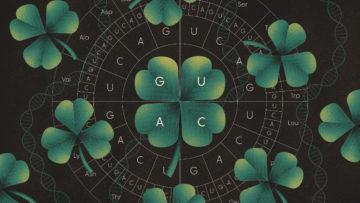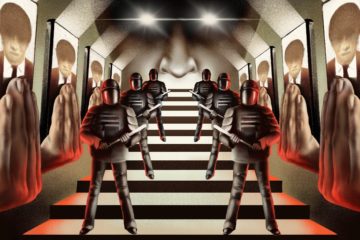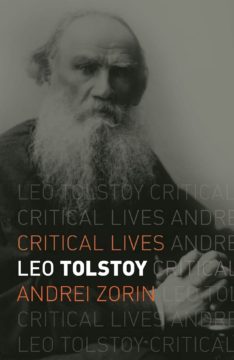Lawrence Weschler in Orion Magazine:
 As a student at St. Paul’s Academy in London, Oliver Sacks founded a tremendously successful literary society. It quickly eclipsed the staid Milton Society, “which had been founded at St. Paul’s, years earlier, by Milton himself,” he says. “We were a ravenous Jewish overgrowth,” he goes on, “and one day the headmaster called me in and said, ‘Sacks, you’re dissolved, you don’t exist,’ as simple as that—a phrase that has persisted within me, hauntingly, through the years.” Talking about St. Paul’s, which “used to be in Hammersmith, in a magnificent Gothic monstrosity,” to which Oliver would bike or bus (“the 28, the bus of my childhood, whose fare has in the meantime jumped from one penny to forty pence”), puts him in mind of the Natural History Museum in nearby South Kensington, which he would often skirt on the way to and from school—and he proposes we head over for a visit.
As a student at St. Paul’s Academy in London, Oliver Sacks founded a tremendously successful literary society. It quickly eclipsed the staid Milton Society, “which had been founded at St. Paul’s, years earlier, by Milton himself,” he says. “We were a ravenous Jewish overgrowth,” he goes on, “and one day the headmaster called me in and said, ‘Sacks, you’re dissolved, you don’t exist,’ as simple as that—a phrase that has persisted within me, hauntingly, through the years.” Talking about St. Paul’s, which “used to be in Hammersmith, in a magnificent Gothic monstrosity,” to which Oliver would bike or bus (“the 28, the bus of my childhood, whose fare has in the meantime jumped from one penny to forty pence”), puts him in mind of the Natural History Museum in nearby South Kensington, which he would often skirt on the way to and from school—and he proposes we head over for a visit.
On the drive, he explains how, though his romance with motorcycles began in adolescence, he really only got his first one on his twenty-first birthday. During his last six months in England, stationed for a residency in Birmingham, he would gun his black Norton down the Birmingham–London highway. Eventually, as virtually his last act in England—he starts to laugh at the memory—he “stepped o=” his bike, at eighty miles an hour, slid a hundred yards on the slippery road, and survived, protected by his leather swaddling. (The bike was destroyed.)
Then, the minute he got to America, he got another, “an off-road scrambler.”
Arriving at the Natural History Museum, a huge and imposing stone secular cathedral built in high confident Victorian Gothic, Oliver relates, as we approach the ramp, “Beneath the visible museum, there was a vast underground one, crammed with anatomical samples. The New Spirit Building, it was called; I was a frequent visitor. The place used to be so unpopular, it was a delight. There were no concessions to popular presentation,” he says, punning.
More here.
 “It seems as though Cromwell has More right where he wants him,” the social scientist Todd Oakley writes in his essay, “Do Pictures Stare?” Many art-loving New Yorkers will immediately get the reference. At the Frick Collection on Fifth Avenue, two portraits by the German artist Hans Holbein the Younger—one of Sir Thomas More, the other of Thomas Cromwell—faced off against each other for years from either side of a majestic fireplace in the hallowed, oak-paneled room known as the Living Hall.
“It seems as though Cromwell has More right where he wants him,” the social scientist Todd Oakley writes in his essay, “Do Pictures Stare?” Many art-loving New Yorkers will immediately get the reference. At the Frick Collection on Fifth Avenue, two portraits by the German artist Hans Holbein the Younger—one of Sir Thomas More, the other of Thomas Cromwell—faced off against each other for years from either side of a majestic fireplace in the hallowed, oak-paneled room known as the Living Hall.
 This story is fairly typical. Inland America is pocked with the unmarked graves of communitarian utopias—primitive socialist and communist experiments—that tried to rebuild the world on what was assumed to be virgin soil. Ephrata, Pennsylvania; Germantown, Tennessee; Utopia, Ohio; Brentwood, New York; Iowa’s Amana Colonies: these and many other towns were originally settled by communalists with lofty visions of abolishing private property, quashing material inequity, and transcending divisive individualism.
This story is fairly typical. Inland America is pocked with the unmarked graves of communitarian utopias—primitive socialist and communist experiments—that tried to rebuild the world on what was assumed to be virgin soil. Ephrata, Pennsylvania; Germantown, Tennessee; Utopia, Ohio; Brentwood, New York; Iowa’s Amana Colonies: these and many other towns were originally settled by communalists with lofty visions of abolishing private property, quashing material inequity, and transcending divisive individualism. Part of the pleasure of reading Parul Sehgal’s book reviews when she served as a critic for The New York Times was the impression that her prose had slipped past the censors. Some of her sentences had the crispness of newspaper copy but others were much more blurred and atmospheric. You could watch her trialing an idea, circling it with adjectives, letting it rise with the sound of the words.
Part of the pleasure of reading Parul Sehgal’s book reviews when she served as a critic for The New York Times was the impression that her prose had slipped past the censors. Some of her sentences had the crispness of newspaper copy but others were much more blurred and atmospheric. You could watch her trialing an idea, circling it with adjectives, letting it rise with the sound of the words. As wildly diverse as life on Earth is — whether it’s a jaguar hunting down a deer in the Amazon, an orchid vine spiraling around a tree in Congo, primitive cells growing in boiling hot springs in Canada, or a stockbroker sipping coffee on Wall Street — at the genetic level, it all plays by the same rules. Four chemical letters, or nucleotide bases, spell out 64 three-letter “words” called codons, each of which stands for one of 20 amino acids. When amino acids are strung together in keeping with these encoded instructions, they form the proteins characteristic of each species. With only a few obscure exceptions, all genomes encode information identically.
As wildly diverse as life on Earth is — whether it’s a jaguar hunting down a deer in the Amazon, an orchid vine spiraling around a tree in Congo, primitive cells growing in boiling hot springs in Canada, or a stockbroker sipping coffee on Wall Street — at the genetic level, it all plays by the same rules. Four chemical letters, or nucleotide bases, spell out 64 three-letter “words” called codons, each of which stands for one of 20 amino acids. When amino acids are strung together in keeping with these encoded instructions, they form the proteins characteristic of each species. With only a few obscure exceptions, all genomes encode information identically. It’s remarkable: For more than a year, it’s been impossible to describe any world leader as a version of the sitting U.S. president. Run this thought experiment yourself: Who might be the “Joe Biden of South America”? Or “Central Europe’s Biden”? You draw a blank. What a contrast from the four years in which the world contained
It’s remarkable: For more than a year, it’s been impossible to describe any world leader as a version of the sitting U.S. president. Run this thought experiment yourself: Who might be the “Joe Biden of South America”? Or “Central Europe’s Biden”? You draw a blank. What a contrast from the four years in which the world contained  Deutsch: I am not the first to propose this idea. The Italian geologist Antonio Stoppani wrote in the 19th century that he had no hesitation in declaring man to be a new power in the universe, equivalent to the power of gravitation.
Deutsch: I am not the first to propose this idea. The Italian geologist Antonio Stoppani wrote in the 19th century that he had no hesitation in declaring man to be a new power in the universe, equivalent to the power of gravitation. Growing up, Erin Nelson used to make fun of their dad for spending so much time looking out the window at what the neighbors were up to. “Now I’m that person,” Nelson, a 31-year-old who bought their first house a year ago in Portland, Oregon, told me. “I’m always peeking out the window … That’s like my new TV.” Nelson, who uses they/them pronouns, has realized that as a homeowner, their life is bound up with the people next door in a way it never has been before.
Growing up, Erin Nelson used to make fun of their dad for spending so much time looking out the window at what the neighbors were up to. “Now I’m that person,” Nelson, a 31-year-old who bought their first house a year ago in Portland, Oregon, told me. “I’m always peeking out the window … That’s like my new TV.” Nelson, who uses they/them pronouns, has realized that as a homeowner, their life is bound up with the people next door in a way it never has been before. IT IS DAUNTING to write a biography of Tolstoy. Hundreds or even thousands of books have already put each detail of his life and work under a microscope, and the archives contain no more hidden treasures. Yet, new interpretations of Tolstoy’s life continue to pour in, with more expected in the run-up to the writer’s 200th birthday in 2028. One of the most immediately obvious advantages of Andrei Zorin’s Leo Tolstoy is its brevity. And I don’t mean this as a backhanded compliment. While other biographies tend to compete with the author’s greatest novels in length, this medium-format book of roughly 200 pages will be welcomed by those who want to learn more about the legendary Russian writer without a major time commitment.
IT IS DAUNTING to write a biography of Tolstoy. Hundreds or even thousands of books have already put each detail of his life and work under a microscope, and the archives contain no more hidden treasures. Yet, new interpretations of Tolstoy’s life continue to pour in, with more expected in the run-up to the writer’s 200th birthday in 2028. One of the most immediately obvious advantages of Andrei Zorin’s Leo Tolstoy is its brevity. And I don’t mean this as a backhanded compliment. While other biographies tend to compete with the author’s greatest novels in length, this medium-format book of roughly 200 pages will be welcomed by those who want to learn more about the legendary Russian writer without a major time commitment. Ingrid Harvold Kvangraven in Aeon:
Ingrid Harvold Kvangraven in Aeon: Ajay Singh Chaudhary in Late Light:
Ajay Singh Chaudhary in Late Light: Lee Harris in Phenomenal World:
Lee Harris in Phenomenal World: R
R Instead of following the well-worn path of thinking about Abraham as the father of a nation, we are presented with a traveling herder about whom we know nothing other than that he had a beautiful wife. Calasso points out that among “the many causes of bafflement scholars come up against in the Bible one of the most glaring is the fact that there are three occasions in Genesis when a man tries to pass off his wife as his sister.” Recalling these episodes alongside the accounts of fathers willing to send out their daughters to be raped by mobs casts these men in rather unflattering light. But more importantly, it raises the question of how the books of the Bible were assembled, how and why stories were included or deleted. The “main author of the Bible,” writes Calasso, “could be thought of as the unknown Final Redactor, who thus becomes responsible for all the innumerable occasions of perplexity that the Bible is bound to provoke in anyone.” This seems to be the interpretative crux. The Bible continues to inspire our cultural and religious imaginary. The question is not whether to read it — it is how we read it.
Instead of following the well-worn path of thinking about Abraham as the father of a nation, we are presented with a traveling herder about whom we know nothing other than that he had a beautiful wife. Calasso points out that among “the many causes of bafflement scholars come up against in the Bible one of the most glaring is the fact that there are three occasions in Genesis when a man tries to pass off his wife as his sister.” Recalling these episodes alongside the accounts of fathers willing to send out their daughters to be raped by mobs casts these men in rather unflattering light. But more importantly, it raises the question of how the books of the Bible were assembled, how and why stories were included or deleted. The “main author of the Bible,” writes Calasso, “could be thought of as the unknown Final Redactor, who thus becomes responsible for all the innumerable occasions of perplexity that the Bible is bound to provoke in anyone.” This seems to be the interpretative crux. The Bible continues to inspire our cultural and religious imaginary. The question is not whether to read it — it is how we read it. Lake Mary Jane is shallow—twelve feet deep at most—but she’s well connected. She makes her home in central Florida, in an area that was once given over to wetlands. To the north, she is linked to a marsh, and to the west a canal ties her to Lake Hart. To the south, through more canals, Mary Jane feeds into a chain of lakes that run into Lake Kissimmee, which feeds into Lake Okeechobee. Were Lake Okeechobee not encircled by dikes, the water that flows through Mary Jane would keep pouring south until it glided across the Everglades and out to sea.
Lake Mary Jane is shallow—twelve feet deep at most—but she’s well connected. She makes her home in central Florida, in an area that was once given over to wetlands. To the north, she is linked to a marsh, and to the west a canal ties her to Lake Hart. To the south, through more canals, Mary Jane feeds into a chain of lakes that run into Lake Kissimmee, which feeds into Lake Okeechobee. Were Lake Okeechobee not encircled by dikes, the water that flows through Mary Jane would keep pouring south until it glided across the Everglades and out to sea. A
A